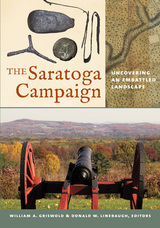247 scholarly books by University Press of New England and 13
have author last names that start with G
247 scholarly books by University Press of New England and 13
247 scholarly books by University Press of New England
13 have author last names that start with G have author last names that start with G
13 have author last names that start with G have author last names that start with G

A Building History of Northern New England
James L. Garvin
University Press of New England, 2002
This is a book about understanding old buildings. In an era in which much of the US landscape has been littered by unimaginative, prefabricated structures, James L. Garvin tells owners and would-be owners of old buildings in Maine, New Hampshire, and Vermont what they need to know before they begin the restoration process. In wonderfully lucid prose, Garvin describes the production of the materials from which the buildings of northern New England were built, outlines the stylistic evolution of the region's structures from the early 1700s to World War II, and offers guidelines for dating old buildings. Focusing on domestic architecture, but including examples of public, commercial, religious, and industrial buildings, he offers custodians of buildings an understanding of the technologies embodied in these structures, answers questions about stylistic changes, and allows the architecture of northern New England to be understood for the first time with a technical depth that is already available for buildings in better-studied parts of the US. Written for both homeowners and those responsible for public and museum structures, this volume provides an understanding of the region's building history even as it specifically answers questions that most often perplex architects and preservationists. By offering all custodians of northern New England buildings a richer understanding of architectural style and structure, the book encourages the use of appropriate methods and materials in building conservation and rehabilitation. Generously illustrated throughout, the book is also an essential resource for anyone who is interested in American and New England architecture and the building trades, and for anyone who has ever wondered about the secrets and stories of old buildings.
[more]

Leaving Pico
Gaspar
University Press of New England, 2001

That’s Gotta Hurt
The Injuries That Changed Sports Forever
Dr. David Geier
University Press of New England, 2017
In That’s Gotta Hurt, the orthopaedist David Geier shows how sports medicine has had a greater impact on the sports we watch and play than any technique or concept in coaching or training. Injuries among professional and college athletes have forced orthopaedic surgeons and other healthcare providers to develop new surgeries, treatments, rehabilitation techniques, and prevention strategies. In response to these injuries, sports themselves have radically changed their rules, mandated new equipment, and adopted new procedures to protect their players. Parents now openly question the safety of these sports for their children and look for ways to prevent the injuries they see among the pros. The influence that sports medicine has had in effecting those changes and improving both the performance and the health of the athletes has been remarkable. Through the stories of a dozen athletes whose injuries and recovery advanced the field (including Joan Benoit, Michael Jordan, Brandi Chastain, and Tommy John), Dr. Geier explains how sports medicine makes sports safer for the pros, amateurs, student-athletes, and weekend warriors alike. That’s Gotta Hurt is a fascinating and important book for all athletes, coaches, and sports fans.
[more]

Angela Gheorghiu
A Life for Art
Angela Gheorghiu
University Press of New England, 2018
Angela Gheorghiu is one of the most passionate and talented artists working in opera today, a larger-than-life figure whose intensity and drive, on stage and off, have commanded the attention of the opera world. Largely composed of exclusive interviews with the artist, this authorized biography of the internationally acclaimed soprano, covers Gheorghiu’s life and career from her childhood in Communist Romania to her spectacular Covent Garden debut in 1992 and up to the present day. In it, Gheorghiu shares new insights into the performance of many of her iconic stage roles and her collaborations with opera’s leading lights. Also featured are commentaries and reminiscences by such celebrated figures in the music and art worlds as Grace Bumbry, José Carreras, Plácido Domingo, Marilyn Horne, Bryn Terfel, and Franco Zeffirelli.
[more]

Mammal Tracks and Sign of the Northeast
Diane K. Gibbons
University Press of New England, 2003
Mammal Tracks and Sign of the Northeast is a field guide for identifying the tracks of mammal species native to the region which extends from New England, New York, and Pennsylvania to eastern Canada. Simple to use and light and easy to carry in the field, the book contains the most important information that a tracker will need—including life-size illustrations of tracks and scat, gait patterns, trail width, species habitat, food sources, scat and urine information, breeding seasons, range maps, and special tracking tips for all thirty-seven species. A unique dichotomous key devised by the author allows trackers to identify even the most confusing track through a process of elimination. The charming, highly detailed, and to-scale pencil illustrations are indispensable aids to accurate identification. Mammal Tracks and Sign of the Northeast is an artistic and accurately rendered guide suitable for professional trackers, naturalists and wildlife professionals, outdoor educators, hunters, and amateurs alike.
[more]

Transgender Voices
Beyond Women and Men
Lori B. Girshick
University Press of New England, 2009
In this extraordinary book, based on 150 in-depth interviews, Lori B. Girshick, a sociologist and social justice activist, brings together the voices of sex- and gender-diverse people who speak with absolute candor about their lives. Girshick presents transpeople speaking in their own voices about identity, coming out, passing, sexual orientation, relationship negotiations and the dynamics of attraction, homophobia (including internalized fears), and bullying. She exposes the guilt and the shame that “gender police” use in their attempts to exert control and points out the many ways transpeople are discriminated against in daily life, from filling out identification documents to gender-segregated bathrooms. By showing us a variety of descriptions of diverse real lives and providing a thorough exploration of the embodied experiences of gender variant people, Girshick demonstrates that there is nothing inherently binary about gender, and that the way each of us experiences our own gender is, in fact, normal and natural.
[more]

Shaker Textile Arts
Beverly Gordon
University Press of New England, 1982
Today we witness a steadily growing interest in the Shakers and their way of life, especially their crafts. Although Shaker furniture, architecture, and herbs, for example, have been written about repeatedly, there are no other studies in depth of another all-important element in Shaker lives--Shaker textiles. Beverly Gordon, an experienced craftswoman and teacher, presents a comprehensive, illustrated book on the kinds of textiles the Shakers used, how they were produced, and their cultural and economic importance to the communities. She shows how Shaker beliefs were manifested in the actual artifacts and integrates detailed technical information in a way that will appeal to the nonprofessional admirers of these crafts as well as to experts. Professional dealers may use the book to verify the authenticity of a variety of items. An introductory chapter is followed by sections on the general characteristics of the textiles, their importance in Shaker lives, and the types of textile activities they undertook. Textile production, including fiber preparation, spinning, weaving, dyeing, knitting, crocheting, and sewing, is examined. Detailed descriptions of rugs and floor coverings, chair and seat tapes and cushions, clothing and personal accessories, popular cloth, and fancywork are followed by appendices on original Shaker weaving drafts, analyses of rugs and chair seat tapes, dye recipes, and instructions for knitting and constructing “fancy” items. This indispensable reference work results in part from the author’s close association with Shaker textiles between 1973 and 1977, when she was a textile interpreter at Hancock Shaker Village. Since then she has had access to artifacts and original manuscripts and documents throughout the country, works that are reflected in her full bibliography. A study from the procurement and processing of materials to the uses of finished products, this is a book of lasting value to collectors and antique dealers, museum curators, home economists, historians, weavers, and fiber artists with related specialties.
[more]

A History of the World in Sixteen Shipwrecks
Stewart Gordon
University Press of New England, 2017
Stories of disasters at sea, whether about Roman triremes, the treasure fleet of the Spanish Main, or great transatlantic ocean liners, fire the imagination as little else can. From the historical sinkings of the Titanic and the Lusitania to the recent capsizing of a Mediterranean cruise ship, the study of shipwrecks also makes for a new and very different understanding of world history. A History of the World in Sixteen Shipwrecks explores the age-old, immensely hazardous, persistently romantic, and ongoing process of moving people and goods across the seven seas. In recounting the stories of ships and the people who made and sailed them, from the earliest craft plying the ancient Nile to the Exxon Valdez, Stewart Gordon argues that the gradual integration of mainly local and separate maritime domains into fewer, larger, and more interdependent regions offers a unique perspective on world history. Gordon draws a number of provocative conclusions from his study, among them that the European “Age of Exploration” as a singular event is simply a myth: over the millennia, many cultures, east and west, have explored far-flung maritime worlds, and technologies of shipbuilding and navigation have been among the main drivers of science and exploration throughout history. In a series of compelling narratives, A History of the World in Sixteen Shipwrecks shows that the development of institutions and technologies that made the terrifying oceans familiar and turned unknown seas into well-traveled sea-lanes matters profoundly in our modern world.
[more]

Nathan Gorenstein
University Press of New England
This is the true tale of two brothers, sons of a successful Jewish contractor, who along with an MIT graduate and a minister’s daughter once competed for headlines with John Dillinger, Pretty Boy Floyd and Bonnie and Clyde. The gang was led by the angry, violent, yet often charismatic Murton Millen, a small-time hoodlum and aspiring race-car driver. With his younger brother, Irv, and later joined by neighborhood buddy and MIT graduate Abe Faber, Murt launched a career of increasingly ambitious robberies. But it was only after his sudden marriage to the beautiful eighteen-year-old Norma Brighton that the gang escalated to murder. Their crime wave climaxed at a Needham, Massachusetts, bank on February 2, 1934, when Murt cut down two local police officers—Francis Haddock and Forbes McLeod—with a Thompson submachine gun stolen from state police. The killings, the dogged investigation by two clever detectives, and the record-setting trial with seventeen psychiatrists were national news. In Depression-era America this Boston saga of sex, ethnicity, and bloodshed made the trio and their “red-headed gun moll” infamous. Gorenstein’s account explores the Millen, Faber, and Brighton families and introduces us to cops, psychiatrists, newspaper men and women, and ordinary citizens caught up in the extraordinary Tommy Gun Winter of 1934.
[more]

Victura
The Kennedys, a Sailboat, and the Sea
James W. Graham
University Press of New England, 2015
To truly understand the dynamics and magic of the Kennedy family, one must understand their passion for sailing and the sea. Many families sail together, but the Kennedys’ relationship with Victura, the 25-foot sloop purchased in 1932, stands apart. Throughout their brief lives, Joe Jr., Jack, and Bobby spent many hours racing Victura. Lack of effort in a race by one of his sons could infuriate Joseph P. Kennedy, and Joe Jr. and Jack ranked among the best collegiate sailors in New England. Likewise, Eunice emerged as a gifted sailor and fierce competitor, the equal of any of her brothers. The Kennedys believed that Jack’s experience sailing Victura helped him survive the sinking of his PT boat during World War II. In the 1950s, glossy Life magazine photos of Jack and Jackie on Victura’s bow helped define the winning Kennedy brand. Jack doodled sketches of Victura during Oval Office meetings, and it’s probable that his love of seafaring played a role in his 1961 decision to put a man on the moon, an enterprise he referred to as “spacefaring.” Ted loved Victura as much as any of his siblings did and, with his own children and the children of his lost brothers as crew, he sailed into his old age: past the shoals of an ebbing career, and into his eventual role as the “Lion of the Senate.” In Victura, James W. Graham charts the progress of America’s signature twentieth-century family dynasty in a narrative both stunningly original and deeply gripping. This true tale of one small sailboat is an invaluable contribution to our understanding of the great story of the Kennedys.
[more]

Emerald Labyrinth
A Scientist's Adventures in the Jungles of the Congo
Eli Greenbaum
University Press of New England, 2017
Emerald Labyrinth is a scientist and adventurer’s chronicle of years exploring the rainforests of sub-Saharan Africa. The richly varied habitats of the Democratic Republic of the Congo offer a wealth of animal, plant, chemical, and medical discoveries. But the country also has a deeply troubled colonial past and a complicated political present. Author Eli Greenbaum is a leading expert in sub-Saharan herpetology—snakes, lizards, and frogs—who brings a sense of wonder to the question of how science works in the twenty-first century. Along the way he comes face to face with spitting cobras, silverback mountain gorillas, wild elephants, and the teenaged armies of AK-47-toting fighters engaged in the continent’s longest-running war. As a bellwether of the climate and biodiversity crises now facing the planet, the Congo holds the key to our planet’s future. Writing in the tradition of books like The Lost City of Z, Greenbaum seeks out the creatures struggling to survive in a war-torn, environmentally threatened country. Emerald Labyrinth is an extraordinary book about the enormous challenges and hard-won satisfactions of doing science in one of the least known, least hospitable places on earth.
[more]

The Saratoga Campaign
Uncovering an Embattled Landscape
William A. Griswold
University Press of New England, 2016
The battles of Saratoga proved to be a turning point in the Revolutionary War when British forces under the command of General John Burgoyne surrendered to American forces led by General Horatio Gates. The Saratoga Campaign provides a new and greatly expanded understanding of the battles of Saratoga by drawing on the work of scholars in a broad range of academic disciplines. Presenting years of research by material culture scholars, archaeologists, historians, museum curators, military experts, and geophysicists, this definitive volume explores these important Revolutionary War battles and their aftermath, adding a physical and tangible dimension to the story of the Saratoga campaign. Presenting the latest hands-on research, The Saratoga Campaign is an original and multifaceted contribution to our understanding of this critical event in America’s birth.
[more]

The Life of a Simple Man
Emile Guillaumin
University Press of New England, 1982
In order to “show the gents of Moulins, of Paris and elsewhere, just what a sharecropper’s life is like,” Emile Guillaumin, under the guise of fiction, wrote this story of “Tiennon,” a French peasant born fifty years before him in 1823. A peasant himself, Guillaumin was unique in that, after a few years of schooling, he continued to work his small farm in central France to the end of his life, reserving nights for study and writing. Guillaumin felt that the French peasant had been misrepresented in contemporary literature--either romanticized as in George Sand or depicted as a dumb victim of the forces of nature as in Zola--and wanted to correct the picture. The result is a moving first-person story that can be read as a fictional account, as well as the best kind of material for historians seeking to understand how nineteenth-century French peasants really lived.
[more]
READERS
Browse our collection.
PUBLISHERS
See BiblioVault's publisher services.
STUDENT SERVICES
Files for college accessibility offices.
UChicago Accessibility Resources
home | accessibility | search | about | contact us
BiblioVault ® 2001 - 2024
The University of Chicago Press









